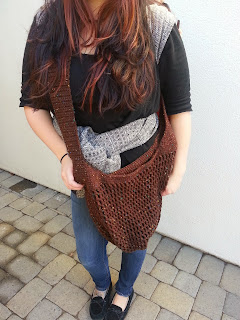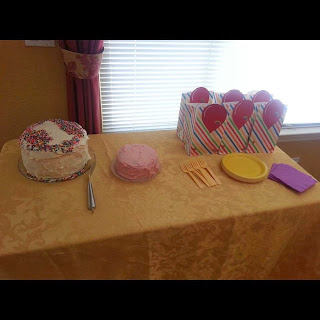I put together this resource for the Reno Babywearing Group. If you are in the Reno/Sparks/Tahoe area and are interested in babywearing, come join us here!
I'm new to babywearing, where do I start?
The world of Babywearing can be intimidating at first. There are so many different choices out
there.
There are a few questions you need to ask yourself before
choosing a carrier.
- What kind of carries do I want to do? Front carries? Back? Hip?
- Is this carrier just for me, or am I going to share it with someone else?
- How much time do I want to put into learning how to use my carrier?
- Am I going to nurse in it?
- Am I going to be in extreme weather (hot/cold?)
Common carrier choices you might see are:
Soft structured carrier
Mei tai
Ring sling
Stretchy wrap
Woven wrap
Soft structured carrier (SSC): A soft structured carrier is
a rectangular piece of fabric with a waist belt and shoulder straps that
buckle. SSCs are easy to learn how to use and are very “daddy friendly”. You can do a front, back, and with some
brands, a hip carry. There are several different brands to choose from. SSCs are generally pretty cool in warmer
weather. Most SSC can be used when your baby weighs 8lbs with a weight limit of
35lbs. There are toddler versions of some carriers that go up to 50lbs. They
are not one size fits all so be sure to check a sizing chart before you make a
purchase.
Mei Tai (MT): A mei tai is similar to a SSC, but instead of
buckles it has ties. A MT is an Asian style carrier. It’s very easy to learn.
You can do a front, back, or hip carry in a MT.
A mei tai is a great choice if you’re going to share the wearing
responsibilities with your significant other, because it is adjustable from
person to person. Most mei tais fit sizes 0-22 and they are available with plus
size straps. Most can be used with a newborn, but safer positioning can be
achieved in a different carrier.
Ring Sling (RS): A ring sling is a piece of fabric attached
to two rings. The fabric is threaded through the rings to create a seat for the
baby. Ring slings are wonderful for newborns and great for nursing discreetly
in. They are fairly adjustable from wearer to wearer. You can do a front, hip
or a back carry (FOR ADVANCED WEARERS ONLY). You may not like a RS with a
heavier baby because it is a one-shoulder carrier. An important note about ring
slings: Your ring sling’s rings should not have any seams (welded). Welded
rings are unsafe for babywearing, as the weight of the baby can cause the rings
to snap and your baby to fall. If you are using a ring sling with welded rings,
discontinue use and contact the manufacturer immediately.
Stretchy Wrap (stretchy): A stretchy wrap is a long piece of
stretchy fabric, usually jersey knit, that you tie around your body. Stretchies
are great for newborns. Front carries are the only safe carries in stretchy
wraps. Most stretchy wraps have a weight
limit that goes up to 35lbs, but they tend to become unsupportive and sag
around 15lbs. Stretchy wraps are a good choice if more than one person is going
to be wearing, because they are very long and will go from person to person
easily.
Woven Wrap (Woven): A woven wrap is a long piece of woven
fabric, often hand woven. It is a similar concept to a stretchy wrap, but it
doesn’t stretch. There is no weight limit for a woven wrap, you could wrap an
adult safely (but probably not comfortably). You can do a front, back, or hip
carry in a woven wrap. Wovens are very versatile from person to person,
depending on the size. The learning curve for a woven is a bit higher than the
rest of the carriers mentioned, but it is doable.
Where do I buy my carrier?
Generally, when purchasing a carrier, you’re going to be
making an online purchase. When purchasing a SSC (particularly an Ergo) it’s
important to make sure you’re buying your carrier from an authorized retailer.
There are lots of fake versions of carriers made and sold cheaply that are
unsafe for babywearing. Baby carriers go through extensive weight testing in
order to be deemed safe and compliant with regulations, and these knock off
carriers go through none of that. There
have been many reports of carriers breaking with babies in them! To be safe,
stay away from eBay. If the price seems too good to be true, it probably is.
Here’s a few places to buy a SSC
And a list of authorized retailers to get an Ergo from:
Comment on this post if there’s a site you’d like me to add!
Buying a wrap is the same. The Moby you’ll be able to find
in most stores that carry baby items, but if you’re looking to purchase a woven
wrap, you’ll most likely need to purchase online. Most wraps are woven and sold from foreign
countries. You can purchase directly from the manufacturer if you want to, but
there are a number of different vendors based in the US to order from. One of
the most common places to purchase a wrap is The Babywearing Swap on Facebook.
It can be a bit overwhelming to a newbie, and it takes a while to get used to
the way things work. Here’s a link to a blog from Babywearing 102 on Navigating
The Babywearing Swap. When purchasing from a WAHM (work at home mom) from a
place like Etsy, it’s important to make sure they are compliant with safety
regulations. Do your research first! Your baby’s life is in the maker’s hands!
These are the vendors I have experience with and recommend making
a woven purchase from:
Please comment or PM me if there’s another vendor you’d like
to see added!
How do
people afford so many carriers?
Just like any luxury item, it comes down to budgeting and where
it fits in priority wise. Some people make room on their budgets for cable,
eating out, wine, vacations, etc. Many large stashes are built over the course
of several years. Many people take time and save up for wraps little by little.
Not everyone with a large stash is wealthy and not everyone with a small stash
is strapped for cash.
Why are carriers and wraps so expensive?
Woven wraps are made from fine textiles that must be strong
enough to endure wear and tear from daily wearing and hold large children. They
are often quite long pieces of fabric and intricately woven. It is similar to
how sheets made of fine material and with a high thread count to endure lots of
washes come with hefty price tags. Starting in 2014, wraps and carriers must
pass extensive testing which is quite costly and will be another factor in
cost.
Why are used wraps just as expensive (or more) as new
wraps?
Baby carriers in general retain their retail value or stay close
to their retail value for a few reasons. One reason is that wraps are usually
easier to wrap with and more comfortable once they are broken in, and some
wraps can take a lot of work to break in. What do we mean by that? Well, you
know your favorite old t shirt or pair of jeans and how soft and comfy it fits?
That's the fibers being broken in. Another reason why wraps maintain or
increase value is that many wraps are limited editions and can no longer be
purchased new, so there is a collectable aspect. Some wraps require
"stalking" to purchase because such a small quantity is released.
Like any product, higher demand equals higher value.
Can I make my own carrier?











































